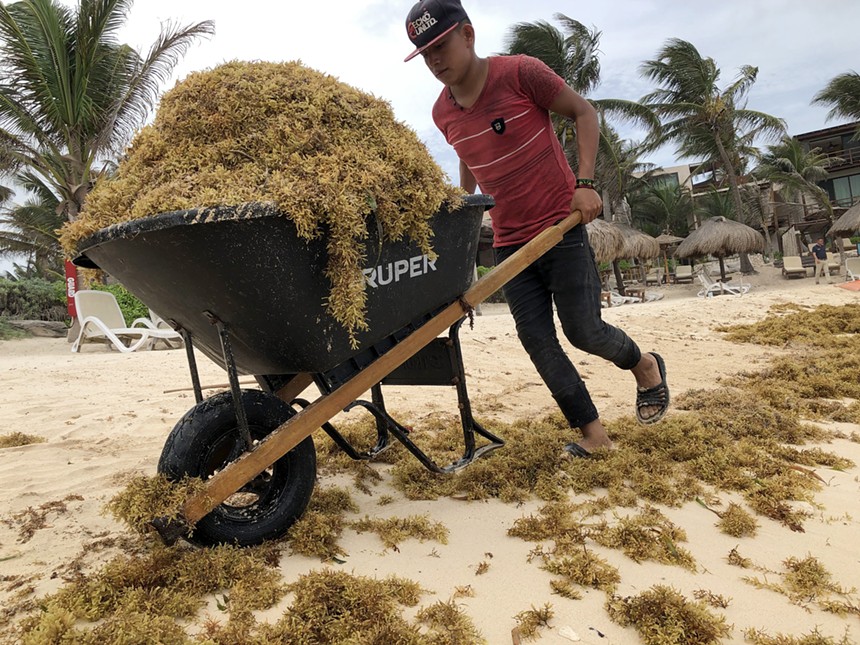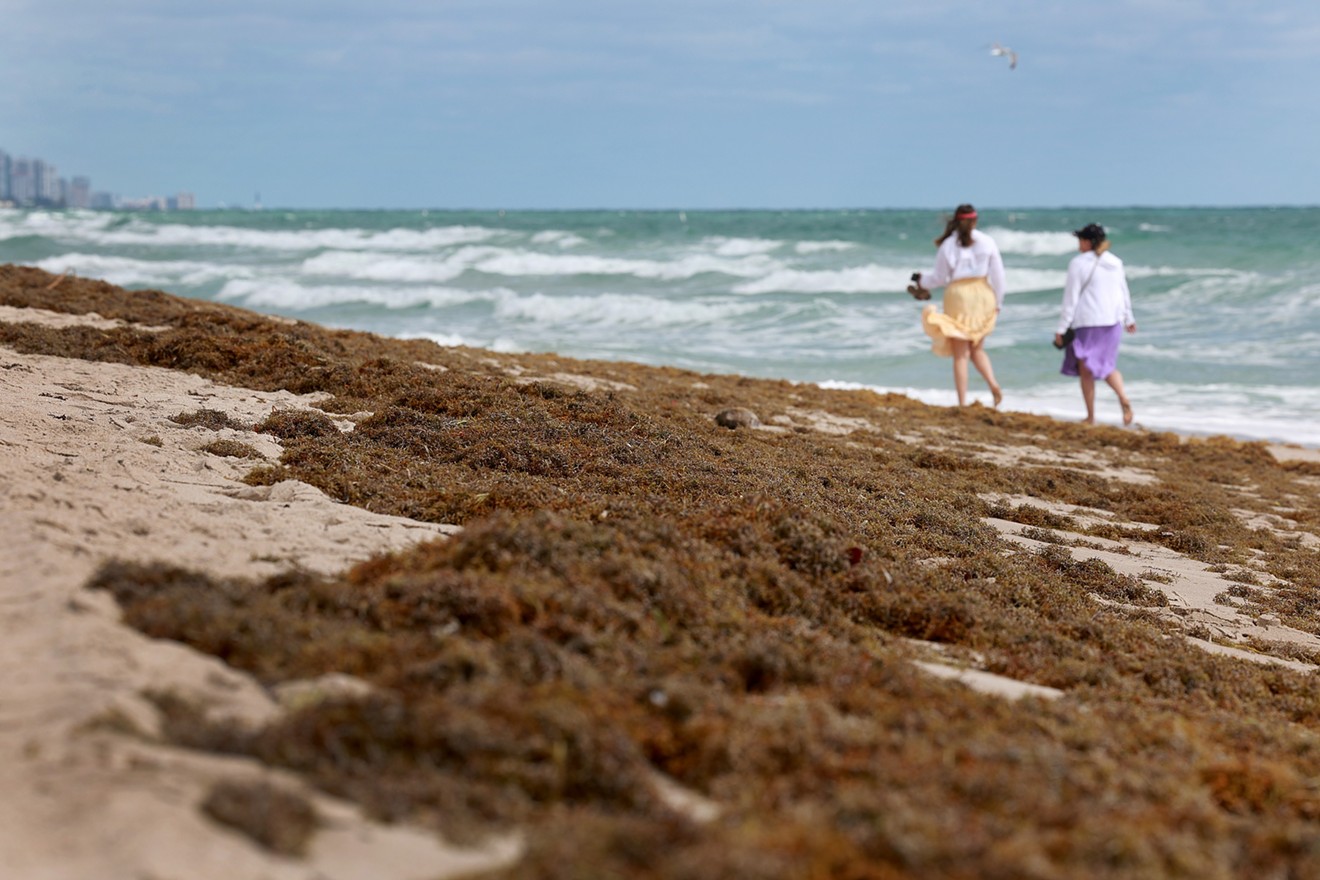The seaweed belt dubbed the "blob" has sparked countless news stories, some of which give the impression that it will choke off Florida shores and ruin beachgoers' day.
But this isn't Florida's first rodeo in dealing with sargassum seaweed.
"In Florida, we're fortunate because we rely on our beaches, and our beach managers have resources," says Helena Solo-Gabriele, an environmental engineering professor at the University of Miami. "There are special grooming trucks, and they're able to separate sand from the sargassum, and they can remove the sargassum from the beach. And so, it doesn't get to that point where it overwhelms people."
Most of the seaweed is expected to stay offshore such that South Florida beaches won't experience piles as large as what has rolled up on the shores of some Caribbean islands and the Lesser Antilles in recent years, requiring large-scale cleanup efforts.
Still, the seaweed might make South Florida beaches a bit stank, thanks to a rotten egg odor from the hydrogen sulfide it emits if left to deteriorate on the shoreline. Stephen Leatherman, a coastal scientist, tells New Times that the off-gassing won't create health concerns unless you have chronic respiratory disease.
"So it's not going to hurt you. It's just a huge nuisance. As this stuff rots, it attracts flies, and then, of course, it covers a beach and there's no place to put your beach chair," Leatherman says.
While the seaweed may put a damper on your beach plans, Leatherman, AKA Dr. Beach, says the sargassum is a far cry from the toxic red tide algae affecting the southwest coast of Florida. The more dangerous algae, Karenia brevis, generates an acrid toxin that has been responsible for mass marine die-offs in Collier, Lee, and other west-coast Florida counties in the last few years.
"If we were having red tide, I would be freaking out," Leatherman adds. "There's not going to be big piles of fish on our beaches... We're not going to have toxic shellfish. This is not as harmful."

A worker uses a rake to clean up piles of sargassum, a seaweed-like algae, from a beach on June 15, 2019, in Tulum, Mexico.
Photo by Justin Sullivan/Getty Images
Research into recycling it as fertilizer or in biofuel production has ramped up over the last five years as blooms became more intense and pressure mounts to find a practical use for the seaweed. Some local governments grind it up and use it as fill material; in other instances, it is disposed of as waste.
Through their research, Solo-Gabriele and her graduate assistant Afeefa Abdool-Ghany have successfully converted the sargassum into compost and used it to grow plants, including radishes. Solo-Gabriele tells New Times that the seaweed can contain trace levels of arsenic, so using it as fertilizer for ornamental plants rather than edible plants would be safer.
"It's being moved to a landfill, so why not do something positive with it?" Solo-Gabriele says.
South Florida beaches are no stranger to this brown, stringy algae.
"[Sargassum] happens every summer, but then lately, in particular over the last five to ten years, it's getting bigger and bigger over time, worse and worse," Solo-Gabriele tells New Times. "It's an issue that's going to get bigger and bigger over time because of climate change and also other global factors that influence the growth of macro-algae."
Leatherman has hypothesized that the conversion of Amazon rainforest into agricultural land, as well as dust from the Saharan Desert in Africa, deposit large amounts of nitrogen and phosphorous into the water, which in turn has been fueling algae growth.
"A fair amount of [fertilizer] runs into the Amazon River, which is one of the largest rivers in the world," Leatherman suggests. "So that comes out into the south Atlantic Ocean and pushes far out into the Gulfstream current."
The current size of the belt is unusually large for this time of year, as the blooms usually peak in late spring and summer.
Although the seaweed belt can provide a floating marine habitat and nursery offshore, marine biologists have raised concerns that if too much of it approaches the shore, it can block sunlight from reaching coral reefs and seagrass, potentially harming fragile ecosystems.
Blobs of sargassum invaded Miami-Dade County and Broward County beaches after a belt formed in 2018, which researchers estimated weighed more than 20 million tons based on satellite images. Just last July, Miami beaches saw their highest levels of sargassum since the county began closely recording the data in 2019.
"2018 was one of the really big years," Leatherman says. "That was gigantic. This may be close to it."











